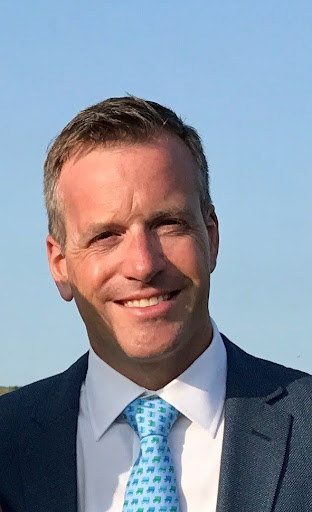December 21, 2023
 by Sonika Malviya / December 21, 2023
by Sonika Malviya / December 21, 2023

Employee attendance has a crucial impact on a company's profitability and success.
When employees are punctual and regular, they can ensure timely delivery of projects. Alternatively, irregularity causes an additional burden on other employees, along with delays in deliveries.
That's why organizations must leverage an efficient tool to track and monitor employees' time and attendance at a reasonable operational cost.
To help you understand and implement this, we'll walk you through the following in this blog:
The data obtained from attendance tracking helps identify employee absenteeism patterns, process payroll for hourly workers, and calculate overtime if they work beyond standard hours.
Companies can track employee attendance manually using spreadsheets, card swipes, or paper timesheets. However, with the advent of technologies, many digitally mature organizations are switching to advanced time and attendance software for timekeeping purposes.
We'll discuss the tools later, but first, let's understand how you can use attendance tracking to improve employee productivity in the next section.
Research shows that employees from companies with lower absenteeism rates can better cope with stressful situations and are healthier than employees from companies where the absenteeism rates are higher.
One of the major advantages of tracking employee attendance is that it helps employers ascertain employee absenteeism patterns (frequent time offs).
Equipped with attendance data, employers can see how many hours employees worked in a day, how many days they didn't work, and days they were not punctual. Once they have insights into the absenteeism pattern and poor attendance, they can take necessary action to prevent such unexpected employee absenteeism.
Employers can have a one-on-one conversation with these employees and extend support if they're dealing with health or family issues to help them meet the minimum attendance criteria.
Time theft is when employees get paid for the time they don't work.
You can mitigate this by automating the attendance monitoring process with the help of an efficient time and attendance management system. This software can calculate the exact work hours and days employees work as per their clock-in and clock-out and can also reveal their system activities during work hours.
To eliminate time theft and better identify employees, employers can consider using biometric authentication, such as facial identification, fingerprints, or retina scans. These are matched with their already-stored data on their unique fingerprints, faces, or eyes to confirm their presence.
When you have visibility into which employees are on time off on a certain day and which ones are working, you can accordingly schedule employees for various tasks. This way, workflow won't get hampered, and important deliverables can be completed promptly.
What's more, you can leverage the data obtained from time and attendance tracking to gain insight into the times, shifts, and days during which you experience frequent time offs so you can adjust the work and resources accordingly.
For example, if a manager finds that many employees apply for time off during certain days, the manager can use this data to schedule resources and manage work accordingly.
When managers have insight into the daily attendance data, they can practice effective workforce management and ensure timely delivery.
Let's say a project manager needs to deliver a time-sensitive task by a close deadline. However, the resource assigned to this work is on time off for a few days.
With the attendance data available, they can look into the other resources who are working and have the bandwidth to pick up this task. They can delegate it to them to complete the task on time.
An employer can reinforce positive behavior and establish a competitive work culture by recognizing employees for maximum attendance. They can use the attendance reports to discern employees with the highest attendance and reward them to improve their morale.
Employers can choose rewards such as cash bonuses, incentives, promotions, vouchers, extended lunch breaks, free paid days off, or outings. This recognition system will boost their morale and encourage other employees to improve attendance.
When employees are appreciated for their hard work, they're more likely to feel committed to their duties, complete their tasks promptly, take on more responsibilities, and show up on time.
When employees know their time is being tracked, they feel accountable for their work responsibilities and the projects they're involved in.
It's because when their attendance is monitored, they're more likely to perform better in their jobs, become responsible for their shift work, and become more productive and punctual. For example, if some issues are flagged during a particular shift, then employees who worked that shift can be held responsible for that mistake or issue.
Equipped with the time and attendance data, you can also find out which employees never showed up on time or weren't available when needed in the project. This can enable you to take necessary actions to minimize such situations.
Attendance tracking systems give insights into data about employees who aren't punctual or have lower attendance than required.
Leveraging any attendance management software to record employees' attendance saves time for the administration department.
By automating the attendance tracking process, you free up the administration department to focus on more important and productive tasks, such as recruiting resources, onboarding new joiners, resolving employee issues related to the job, or conducting wellness programs.
Moreover, automating the process narrows down the chances of human intervention or erroneous data entry in the system, thus ensuring accurate attendance records.
A combination of culture change, manager accessibility, health promotion, and work-life balance is the most effective way to enable and sustain maximum attendance.
The first step to improve employee attendance is to craft an attendance policy with clear rules and regulations. The policy must give insights into the following:
The policy must contain all the relevant details to work as a handy guide for newcomers, and employees can refer to it whenever any conflict arises.
There can be several reasons behind the poor attendance of employees. You can assess the data on absenteeism patterns and try to determine its root cause by talking to employees so you can take necessary measures accordingly.
Suppose they're unable to maintain optimum levels because of critical reasons, such as poor health, family issues, or chronic illness. In that case, giving them the benefit of the doubt and allowing them to explain before taking disciplinary action immediately is crucial.
Apart from these instances, toxic work culture, disputes with colleagues, workplace politics, or heavy workloads can also cause poor attendance for some employees. Make sure you check with employees occasionally using a one-on-one conversation or conduct a survey to check the workplace conditions and environment.
To successfully implement any policy for employees, you must set clear expectations and clarify boundaries that they need to be aware of.
You can mention the expectations in the policy as well, such as:
Also, it's advised that employers share about these things while onboarding employees.
For example, in customer services, managers can inform new joiners that unplanned leaves may not be granted, and they may have to work strictly for a number of hours without fail. Similarly, for construction workers, HR can clarify that they may have to work under certain conditions for an X number of hours.
Employees put effort into stepping up their attendance when they have visibility into their and others' attendance records. Sharing the attendance records with employees will help them determine if they're lagging or have the optimum level of attendance.
Wellness programs insist on improving employees' well-being through proper diet, exercise, stress management, and illness prevention. Workplace wellness programs are designed to beat the trend of absenteeism caused by the poor health of employees and decrease their medical expenses.
So, employers and HR should arrange these programs from time to time to cover several dimensions of well-being and wellness, such as disease management, financial counseling, fitness classes, free healthy food, health coaching, health education, weight management, tobacco and cigarette cessation, etc.
With an open-door policy, management becomes accessible to employees, who can openly discuss any issue.
This policy encourages employees to express their issues freely, such as workload, stress, fatigue, poor health, family issues, etc., so management can take proactive action or extend their assistance to help them tackle it.
Such policies build trust in employees, and they can reach out to management if, for some reason, they're not able to maintain optimum attendance levels.
Employers must create a paid time off (PTO) policy that should spell out the paid leaves available to employees, such as vacation, sick leave, etc, and how to use them. This way, they can avail of any particular leaves whenever required, reducing the likelihood of frequent and unexpected absences.
The policy should mention the types of leaves available, the number of available leaves, the criteria to avail them, and terms and conditions for rejection of time off requests.
Employers can also choose time and attendance management software that lets them check time off requests and accept or reject them immediately. It can also empower employees to apply for time off and view their leave balance at any time so that they can plan their future leaves accordingly.
Having a robust employee reward and recognition program is effective not just in improving attendance but also in increasing productivity and morale. The reward system encourages employees to show up to work, improve attendance, and become accountable for their work.
Employers can have an annual reward system where they can provide certain perks, incentives, prizes, or bonuses to those employees with the highest attendance and punctuality rates.
With this system, employers can convey that the management values and appreciates employees' punctuality and sincerity towards work. These can be set as examples for others to be regular and punctual at work.
Sometimes, flexible work schedules can help achieve better attendance rather than stringent work timings. Employers can experiment with flexible work schedules to see if they witness any improvement in productivity and attendance.
They can try alternative workweek schedules that offer flexibility to employees without compromising the work hours. For instance, a flexible work schedule requires employees to work 8 hours daily and 40 hours a week. However, they have the liberty to choose their shift's start and end times.
Similarly, in a variable-day workweek schedule, employees have to work 40 hours per week, including some core hours; however, they're free to choose their start and end times and shift length each day.
Alternatively, employers can opt for compressed workweek schedules, such as the 9/80 work schedule or 4/10 work schedule, that squeeze 40 work hours into fewer days.
For instance, in a 4/10 work schedule, employees work for 10 hours for 4 days and get 3 days off. This way, they get extra time off in exchange for working extra hours each workday.
Here's what it looks like:
Source: Replicon.com
When employees can work at their own pace and have a work-life balance, they're more likely to show up at work and perform their best. Such flexible schedules provide better work-life balance while ensuring optimum employee attendance.
Tracking accurate employee data is necessary to get visibility into employees' absences and presence and to run payroll for hourly workers. However, if the data is tracked manually using time cards, spreadsheets, or paper timesheets, it becomes prone to errors and buddy punching.
So what's the solution?
With time and attendance software, employers can track employee attendance and work hours. With this, employees can clock in and out whenever they start and finish their shift, and the system will automatically calculate and store their work hours and number of days worked.
These tools and software also generate insightful reports providing real-time visibility into the number of days employees worked, the number of leaves they used, and the number of hours they worked each day. Employers can use the tool to send reminders to employees with attendance below the minimum and punctuality issues.
Some tools have advanced features such as biometric scanners, facial recognition systems, and GPS-embedded tracking. Employers can opt for a tracker that's intuitive, easy to use, and suits their needs.
Source: Replicon.com
There are two types of attendance trackers.
In a manual attendance tracking system, employees must manually write down their arrival and departure times on the attendance sheet or timesheet. This attendance sheet may comprise columns for their names, time of arrival, and signature.
Employers even use analog systems with time cards employees use to record their attendance. In this system, employees record their arrivals or departures by punching their attendance cards. However, this system can be easily manipulated and is prone to buddy punching.
Another way of manual tracking is using spreadsheets, where employees manually fill in their log-in and log-out details at the end of each day and submit them to employers at the end of the week for review.
Source: Replicon.com
Many organizations are pivoting to digital tracking systems as they've automated the entire attendance recording process, and it comes with an intuitive and user-friendly interface. The system stores employees' credentials and uses the data to register their clock-in and clock-out time.
Here are a few types of digital attendance systems used widely by employers:
Biometric systems for attendance recording: This is one of the most innovative ways to track time and attendance. It's designed to ensure the authenticity of the clock in and out process and eliminate buddy punching.
Fingerprint recognition: In this attendance system, employees scan their fingerprints to log in and out. The system stores the fingerprints of each employee as their unique credentials and uses this data to clock in and out. This system can't be manipulated and is also free from buddy punching.
Face recognition: This system saves images of human faces as their unique credentials. Whenever employees scan their faces in front of the scanner, the system checks if their face matches the data stored in the system and thus clocks them in and out.
Pin-based attendance system: Each employee has a unique password in the form of a PIN or letters. To clock in and out, employees have to input their password into the system whenever they arrive or leave. However, this system is prone to human intervention as employees can share passwords with coworkers to register their presence.
Proximity card: As the name implies, in the proximity card reader system, a contactless card from an employee is presented within the system's activation radius. Employees use this card as a credential to get access to the office.
They can keep it in their wallet or pocket, and the system keeps scanning the card as long as it's in the activation radius, monitoring employee movement at the workplace this way.
Source: Replicon.com
With many time trackers available in the market, you may be confused about which one can fit the bill.
You can consider the following factors to help you make an informed decision:
The attendance tracking software should be intuitive and easy to use for the entire workforce and shouldn't require much technical configuration during punching or extensive training to operate it.
Budget is another important factor when choosing any attendance monitoring system. You can opt for a basic attendance monitoring system that's not too expensive and has the essential features you need.
Regardless of which system you choose, the most important thing is that it should capture accurate data for each employee.
Since many organizations link the payroll system with the attendance tracking system, errors in attendance may lead to faulty payroll processing and even compliance issues.
Attendance systems are linked with the payroll processing system in some organizations. Thus, it may have access to personal information and employee salaries.
That's why it's crucial that the employee data is stored safely and securely and isn't accessible by anybody without required permissions.
You should opt for a cloud-integrated system to store the employees' data safely in one secure place. Whenever someone in higher management needs access to data, they can access it with permission.
The attendance management software you choose should be able to provide real-time attendance reports. Such reports will help management identify employees who aren't punctual or have frequent absences.
Moreover, managers can delegate tasks from absentees to other working employees.
An attendance management system should have a feature for employees to request time off and breaks. The system should also allow managers to approve or reject all leave requests of employees, whether they are vacation days, sick days, or parental leaves.
Source: Replicon.com
For remote workers who work on-site, such as in the construction industry, the system should have the capability to track attendance from any device (whether it's a laptop, phone, or an iPad), i.e., the system should be designed in a way that remote employees can log in or out from their phone or other such devices.
If you have a mobile workforce that constantly moves or has to travel to different sites, you should look for a time-tracking system with built-in geofencing and GPS tracking capability. Armed with these features, you can easily manage your workforce by tracking their work hours and locations.
Most organizations link their attendance system with a payroll system to run employee payroll based on the number of hours or days worked.
Thus, the attendance management system you opt for should integrate easily with the payroll software to streamline payroll calculation and processing.
Like any other system, your employees need to start using a tracker for time and attendance needs to be implemented the right way. Here's how:
Whether your workforce is tech-savvy or not very friendly with tool usage, basic training is mandatory to familiarize employees with how the system works and how to use it when introducing an attendance tracking system.
Ensure you cover all the major topics in the training session and keep a Q&A session so employees can ask queries and clear up any doubts. You can include such questions in the sessions to help them understand how they need to use the system:
Ensure you include the tool's usage instructions in the policy for new joiners so they can understand how to use it. As for the existing employees, including its usage in the policy will work as a reference if they face difficulties while working with the tool.
To understand the employees’ experience with the tracking system, you can release surveys in a month or so. You can even conduct anonymous surveys so employees can freely share their opinions and experiences about it.
If you get negative feedback from most of the employees, make sure to look into the issue the tracker may have. Consider addressing the issue or opt for another tool if it doesn't work well for your organization.
You can hold the administration dept accountable for checking how the system is working. Make a rule where every day, a person from administration would spend a few minutes at the start of the day to ensure the application or tool is in proper condition and working smoothly.
Moreover, they should verify if the reminder system and all alerts are up to date. For example, if an employee hasn't filled out the timesheet the previous day, the system should be able to send reminders to those employees so they can complete their timesheets.
Globally, COVID-19 has not only impacted public health but has also changed the way organizations operate. With hybrid and remote working becoming the new norm, employers face difficulty managing their workforce remotely, especially tracking their attendance and work activities.
This challenge of remote tracking can be solved by leveraging an efficient time and attendance management software that can do the following:
Implementing an advanced timekeeping tool for tracking employee time and attendance can yield many benefits for your organization, including improved productivity, better attendance, accurate payroll processing, and increased efficiency.
Though you can manually track employees' time and attendance using spreadsheets or time cards, most organizations are switching to digital trackers. These utilize advanced biometric systems to accurately record employees' attendance and eliminate human intervention to provide an error-free system and valuable insights instrumental in promoting high productivity levels at modern workplaces today.
Ready to redefine how you work from home? Discover essential tools that enhance collaboration, productivity, and efficiency for your remote team.
Sonika Malviya is a content writer at Replicon, specializing in covering topics related to time tracking and workforce management software. With her in-depth knowledge of these topics, she translates technical details into understandable and relatable content to empower businesses to optimize their productivity, improve their workflows, and achieve greater success in managing their time. Beyond her professional role, Sonika finds solace and inspiration in her travels.
If there is one thread you can follow through every organization and use to track the health...
 by Dave Parks
by Dave Parks
The purpose of starting a business is to solve a problem.
 by Diksha Singh
by Diksha Singh
Thousands of proposals for government contracts are sent every day.
 by Bethany Fagan
by Bethany Fagan
If there is one thread you can follow through every organization and use to track the health...
 by Dave Parks
by Dave Parks
The purpose of starting a business is to solve a problem.
 by Diksha Singh
by Diksha Singh


